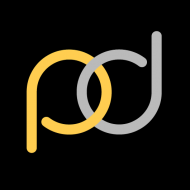The relationship between the markers and skeleton is vital to achieving the best looking and highest fidelity result. While solver attributes can be adjusted, the most effective way to fix problems and improve results is to change the way the markers relate to the skeleton. If the system is being forced into a difficult position, the solver may have a hard time finding a solution, and artifacts such as popping or unnatural orientations and movements can occur.
In particular, the position of the joint centers in the system can have an effect on the result. Unfortunately, it is not always possible to change the joint centers on a production model, so the artifacts must be reduced. Even with perfect joint centers, the solver can have trouble accommodating for markers that slide around on the suit and for flexible actors in a capture subject versus the rigid joints (no translation) in a computer model. Changing the relationship between the markers and the skeleton can help reduce these artifacts.
The whole system is solved at once, so every bone is dependent on every marker, if only by a very small amount. This means that it is possible for the hand markers to pull the arm in a particular direction which pulls the clavicle, spine and root. So, while problems may appear in the root or spine, the cause of the problem may be further down the chain.
Closing Gaps
While locating the problem, the first place to look, is where there are spaces between the active markers (the spheres parented to the skeleton) and the motion capture data that they are trying to reach. The bigger the distance there is, the more error will be in the system, and the greater the chance of artifacts occurring.
On hands and feet, the markers may fall short of their target, which means the joint is not long enough at that pose, which may be because the joint center is not in the correct place. If the markers are beyond the target, then the joint may be too long.
Removing Offsets
Sometimes the problem may be a simple offset. If the posing of the skeleton in relation to the motion capture data needs to be adjusted, the easiest way to do this is to lock the marker’s position then rotate the bones, then unlock the markers again. It is important to remember to unlock the markers because if the bones are moved by animation or solving, this can permanently apply offsets to the rig (Undo will generally not return it to the original state).
To lock the markers, select the marker you want to lock, then click on this icon: ![]()
To unlock all markers that have been locked, click on this icon: ![]()
Tip: You can select all the markers from the peelSolve 2 Menu → Select → Active
